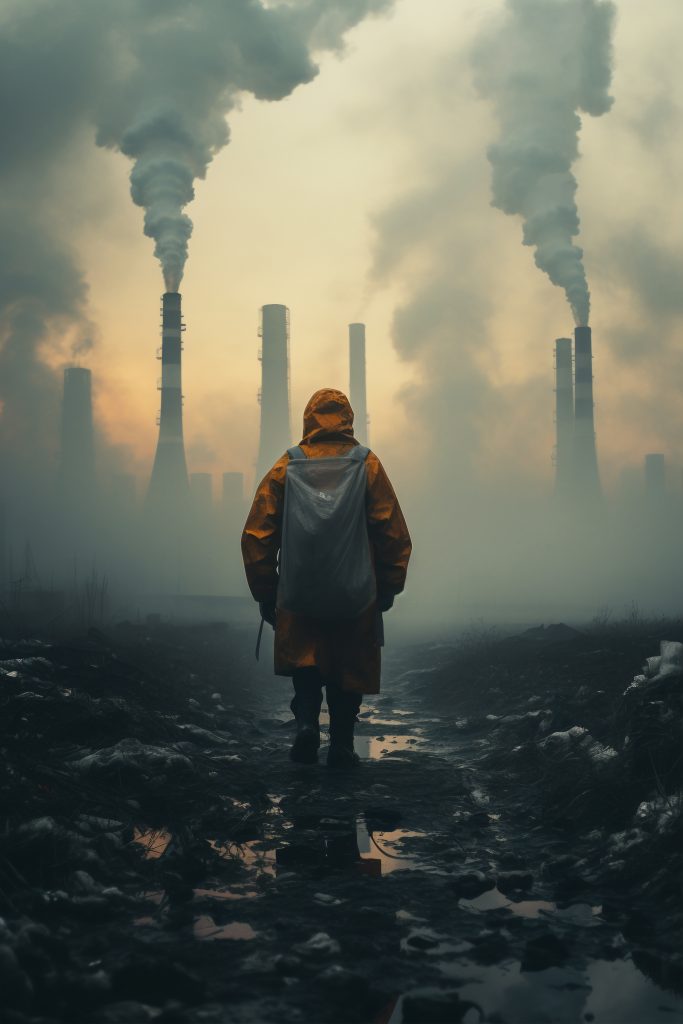Are you worried about the fate of the Zaporizhia Nuclear Power Plant in Ukraine? As the largest plant in Europe, it plays a vital role in providing electricity to the region. However, recent events have raised safety concerns. Russian forces have taken control of the plant, alleging a bombing plot by Ukraine. While the plant hasn’t been hit, fears of sustained attacks and radioactive leaks persist. The situation is uncertain, and the motives behind the occupation are unclear. Let’s explore the risks and uncertainties surrounding this critical facility.
Background on Zaporizhia Nuclear Plant
The Zaporizhia nuclear plant, located in south-eastern Ukraine, is the largest nuclear plant in Europe. It consists of five reactors and has a safety-first design. The plant was not designed to be used as a military base in an active war zone. Workers at the plant are trained for various situations, including earthquakes, to ensure nuclear safety.
Currently, the Zaporizhia plant is facing risks due to the military occupation by Russian armed forces. Russia claims that Ukraine is planning to bomb the plant and blame Moscow, while shelling intensifies around the facility with rockets fired from Russian-controlled positions. Despite the critical infrastructure of the plant not being directly hit, concerns remain about the risks of sustained artillery strikes.
There are potential environmental impacts and concerns about radioactive emissions. The safety-first design of the Zaporizhia plant should protect against a Chernobyl-style meltdown. The plant has a containment dome and water cooling systems. However, using the plant as a military base increases the risks. Shutting down reactors as a precaution could lead to reliance on backup power for cooling, which could be compromised by damage to power lines or reliance on diesel generators, potentially increasing the risk of radioactive emissions.
Allegations and motivations are also part of the background. The Ukrainian atomic chief believes that the Kremlin is engineering a crisis, possibly to justify a switch of the power station from the Ukrainian to the Russian grid. Workers at the plant have been given instructions to prepare for this switch. However, concerns remain about the intentions and knowledge of Russian commanders, as the situation is further complicated by the propaganda war between both sides.
The uncertainty surrounding the situation at the Zaporizhia plant is significant. The exhausted staff lacks protocols for sustained artillery strikes, and workers have been instructed not to come in on a specific day. If the plant were to be taken out by shelling, it could release radioactive emissions within 90 minutes. The potential consequences of a disaster at the Zaporizhia plant are significant and could have far-reaching effects on both the environment and the population.
Current Situation and Risks at Zaporizhia Plant
Amidst the escalating political tensions, you face the current situation and risks at the Zaporizhia nuclear plant. Here’s what you need to know:
- Rising tensions: The occupation of the Zaporizhia plant by Russian armed forces has heightened concerns about a potential radiological incident. Accusations and counter-accusations between Ukraine and Russia have further increased the tension.
- Safety precautions: The critical infrastructure of the plant has not been directly hit by artillery strikes, but there are concerns about the risks of sustained shelling. The exhausted staff lacks protocols for such attacks, and the plant’s workers have been instructed not to come in on a specific day.
- Artillery strikes: Shelling around the plant has intensified, with rockets being fired from Russian-controlled positions. While the plant’s safety-first design should protect against a Chernobyl-style meltdown, sustained artillery strikes could damage power lines and backup systems, increasing the risk of radioactive emissions.
- Propaganda influence and international cooperation: The situation at the Zaporizhia plant is highly uncertain due to propaganda from both sides. International cooperation is crucial to prevent a potential disaster. The International Atomic Energy Agency (IAEA) has called for access to all plant buildings to verify the absence of mines or explosives.
In this volatile situation, it is essential to prioritize safety precautions and international cooperation to mitigate the risks faced at the Zaporizhia nuclear plant.
Potential Radioactive Emissions and Their Risks
Rising concerns surround the potential radioactive emissions and the associated risks at the Zaporizhia nuclear plant. As the Russian armed forces occupy the plant and shelling intensifies in the surrounding area, there is an increased risk of sustained artillery strikes on the facility. While Zaporizhia’s safety-first design should protect against a Chernobyl-style meltdown, the use of the plant as a military base raises concerns. The plant has safety measures in place, such as a containment dome and water cooling systems. However, shutting down reactors as a precaution could lead to reliance on backup power for cooling, increasing the risk of radioactive emissions if there is damage to power lines or a reliance on diesel generators.
To better understand the potential risks, let’s take a closer look at the safety measures in place at the Zaporizhia nuclear plant:
| Safety Measures | Description |
|---|---|
| Containment Dome | The plant has a containment dome to prevent the release of radioactive materials in case of an accident. This structure is designed to withstand external forces and keep the reactor core contained. |
| Water Cooling Systems | The plant relies on water cooling systems to keep the reactors at a safe temperature. These systems circulate water around the reactor core, removing heat and preventing overheating. |
| Backup Power | In the event of a power outage, the plant has backup generators that can provide electricity to critical systems, such as cooling pumps, to prevent a meltdown. |
| Propaganda Influence | It is important to consider the influence of propaganda from both sides when assessing the situation at the plant. This can make it difficult to accurately evaluate the risks and intentions of the Russian commanders. |
While the current situation at the Zaporizhia nuclear plant is highly uncertain, it is crucial to prioritize the safety of the facility and minimize the potential for radioactive emissions. The international community must remain vigilant and support efforts to ensure the plant’s security and prevent any potential disaster.
Allegations and Motivations Behind the Crisis
You may be wondering about the allegations and motivations behind the crisis at the Zaporizhia nuclear power plant. Here are four key points to consider:
- Russian propaganda: There are concerns about the role of Russian propaganda in exacerbating the crisis. Both Ukrainian and Russian authorities have made accusations against each other, making it difficult to assess the situation accurately. It is important to critically evaluate information coming from both sides.
- Ukrainian grid: One motivation behind the crisis could be the desire to switch the power station from the Ukrainian to the Russian grid. Ukrainian atomic chief believes that the Kremlin is engineering the crisis to justify this switch. Workers at the plant have reportedly been given instructions to prepare for the switch, raising concerns about the intentions and knowledge of Russian commanders.
- Radioactive emissions: The use of the plant as a military base increases the risks of potential radioactive emissions. While Zaporizhia’s safety-first design should protect against a Chernobyl-style meltdown, there are concerns about the impact of sustained artillery strikes on the plant. Damage to power lines and reliance on backup power could increase the risk of radioactive emissions.
- International cooperation: Given the potential consequences of a disaster at the Zaporizhia plant, international cooperation is crucial. Ukrainian authorities have called on the international community to prevent a possible catastrophe. The International Atomic Energy Agency (IAEA) has called for access to all plant buildings to verify the absence of mines or explosives. International support and assistance would be essential in addressing the nuclear security concerns surrounding the crisis.
Uncertainty and Potential Consequences at Zaporizhia Plant
The uncertainty surrounding the situation at the Zaporizhia nuclear power plant brings forth concerns about potential consequences. The current risks at the plant stem from the Russian armed forces’ occupation and the intensifying shelling in the vicinity. While the critical infrastructure of the plant has not been directly hit, there are concerns about sustained artillery strikes that could pose risks to the safety of the plant.
In terms of potential outcomes, the safety measures in place at the Zaporizhia plant, such as its safety-first design, containment dome, and water cooling systems, should protect against a Chernobyl-style meltdown. However, using the plant as a military base increases the risks. Shutting down reactors as a precaution could lead to reliance on backup power for cooling, potentially increasing the risk of radioactive emissions if there is damage to power lines or reliance on diesel generators.
Furthermore, the uncertainty surrounding the situation impacts emergency response preparedness. The exhausted staff lacks protocols for sustained artillery strikes, and workers have been instructed not to come in on a specific day, indicating the potential for an imminent threat. In the event that the plant is taken out by shelling, radioactive emissions could be released within 90 minutes, posing significant consequences.
Public perception is also a crucial aspect to consider. The allegations and counter-accusations between Ukraine and Russia, along with the difficulty in accurately assessing the situation due to propaganda from both sides, contribute to the overall uncertainty and public anxiety surrounding the Zaporizhia plant.
International Concerns and Limited Access to the Plant
Amidst the uncertainty and potential consequences at the Zaporizhia nuclear power plant, international concerns have been raised regarding limited access to the facility due to the ongoing political tensions. This situation raises several issues and considerations:
- IAEA access: The International Atomic Energy Agency (IAEA) has called for access to all plant buildings to verify the absence of mines or explosives. However, their access has been limited, hindering their ability to fully assess potential threats and ensure the safety of the facility.
- International cooperation: The current situation underscores the importance of international cooperation in addressing and preventing radiological incidents. Collaborative efforts among nations are crucial in sharing expertise, resources, and information to mitigate potential risks and protect public health.
- Radiological incident prevention: Limited access to the plant poses challenges in effectively preventing radiological incidents. Without comprehensive inspections and verification, it becomes more difficult to ensure the integrity and safety of the facility, potentially increasing the risks of environmental impact and public health hazards.
- Environmental impact and public health risks: A radiological incident at the Zaporizhia plant could have far-reaching consequences, including environmental contamination and risks to public health. Early detection, proper monitoring, and timely intervention are necessary to minimize the potential impact on neighboring regions and the ecosystem.
Addressing these international concerns and ensuring access to the plant is essential in maintaining the safety and security of the Zaporizhia nuclear power plant. International cooperation and collaboration are critical in preventing radiological incidents and safeguarding the environment and public health.
Evacuation Preparedness and Expert Opinions
Continuing the discussion on the limited access to the Zaporizhia nuclear power plant amidst political tensions, it is important to address the preparedness for evacuation and the opinions of experts. Evacuation measures are crucial in ensuring the safety of the population in the event of a potential disaster. The local population in Zaporizhia has been practicing evacuations, reflecting their concerns about a nuclear disaster. However, public perception is heavily influenced by the rising tensions between Ukraine and Russia, leading to anguish, black humor, and fatalism among the residents.
Expert analysis is vital in understanding the risks and potential consequences of a radiological incident at the Zaporizhia plant. The Institute for the Study of War (ISW) believes that Russia is unlikely to cause such an incident, considering the resilience of the reactors. The International Atomic Energy Agency (IAEA) has conducted inspections and found no traces of mines or explosives. However, limited access to certain areas of the plant hinders the verification of potential threats.
In terms of international aid, the Ukrainian authorities have called on the international community to prevent a possible catastrophe. President Zelensky has emphasized the need for independent and objective verification of facts on the ground. International support and cooperation are essential in addressing nuclear security concerns and mitigating the potential risks associated with the Zaporizhia nuclear power plant.





